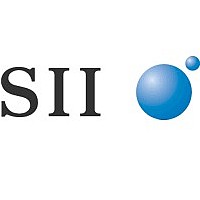S-8261 Seiko Instruments, S-8261 Datasheet - Page 18

S-8261
Manufacturer Part Number
S-8261
Description
Battery Protection IC for Single-Cell Pack
Manufacturer
Seiko Instruments
Datasheet
1.S-8261.pdf
(36 pages)
Available stocks
Company
Part Number
Manufacturer
Quantity
Price
Company:
Part Number:
S-8261AAGMD-G2GT2G
Manufacturer:
NXP
Quantity:
1 001
Company:
Part Number:
S-8261AAGMD-G2GT2G
Manufacturer:
SEIKO
Quantity:
48 000
Part Number:
S-8261AAGMD-G2GT2S
Manufacturer:
SEIKO/精工
Quantity:
20 000
Company:
Part Number:
S-8261AAJBD-G2J-TF
Manufacturer:
MOLEX
Quantity:
51 362
Part Number:
S-8261AAJMD-G2J-T2
Manufacturer:
SEIKO/精工
Quantity:
20 000
Company:
Part Number:
S-8261AAJMD-G2JT2G
Manufacturer:
SEIKO
Quantity:
93 000
Part Number:
S-8261AAJMD-G2JT2G
Manufacturer:
SEIKO/精工
Quantity:
20 000
Company:
Part Number:
S-8261AAJMD-G2JT2S
Manufacturer:
SEIKO
Quantity:
93 000
Part Number:
S-8261AAJMD-G2JT2S
Manufacturer:
SEIKO
Quantity:
20 000
Part Number:
S-8261AAMMD-G2MT2S
Manufacturer:
SEIKO/精工
Quantity:
20 000
18
BATTERY PROTECTION IC FOR SINGLE-CELL PACK
S-8261 Series
Operation
Remark Refer to the “Battery Protection IC Connection Example”.
1. Normal Condition
2. Overcurrent Condition (Detection of Overcurrent 1, Overcurrent 2 and Load Short-circuiting)
3. Overcharge Condition
The S-8261 Series monitors the voltage of the battery connected between VDD pin and VSS pin and the
voltage difference between VM pin and VSS pin to control charging and discharging. When the battery
voltage is in the range from the overdischarge detection voltage (V
(V
1 detection voltage (V
condition is called the normal condition, and in this condition charging and discharging can be carried out
freely.
Remark When a battery is connected to the IC for the first time, discharging may not be enabled. In
When a battery in the normal status is in the status where the voltage of the VM pin is equal to or higher
than the overcurrent detection voltage because the discharge current is higher than the specified value
and the status lasts for the overcurrent detection delay time, the discharge control FET is turned off and
discharging is stopped. This status is called the overcurrent status.
In the overcurrent status, the VM and VSS pins are shorted by the resistor between VM and VSS (R
in the IC. However, the voltage of the VM pin is at the V
is connected. When the load is disconnected, the VM pin returns to the V
This IC detects the status when the impedance between the EB+ pin and EB− pin (Refer to Figure 11)
increases and is equal to the impedance that enables automatic restoration and the voltage at the VM pin
returns to overcurrent detection voltage 1 (V
normal status.
Remark The impedance that enables automatic restoration varies depending on the battery voltage and
When the battery voltage becomes higher than the overcharge detection voltage (V
under the normal condition and the detection continues for the overcharge detection delay time (t
longer, the S-8261 Series turns the charging control FET off to stop charging. This condition is called
the overcharge condition.
The overcharge condition is released by the following two cases ((1) and (2)):
(1) When the battery voltage falls below the overcharge release voltage (V
(2) When a load is connected and discharging starts, the S-8261 Series turns the charging control FET
Remark 1. If the battery is charged to a voltage higher than the overcharge detection voltage (V
CU
hysteresis voltage (V
condition.
on and returns to the normal condition. Just after the load is connected and discharging starts, the
discharging current flows through the parasitic diode in the charging control FET. At this moment the
VM pin potential becomes V
battery voltage goes under the overcharge detection voltage (V
voltage is higher than the overcurrent 1 detection voltage, the S-8261 Series releases the overcharge
condition.
), and the VM pin voltage is in the range from the charger detection voltage (V
2. When a charger is connected after the overcharge detection, the overcharge condition is
this case, short the VM pin and VSS pin or connect the charger to restore the normal
condition.
the set value of overcurrent 1 detection voltage.
the battery voltage does not fall below the overcharge detection voltage (V
heavy load is connected, the detection of overcurrent 1, overcurrent 2 and load short-
circuiting do not function until the battery voltage falls below over charge detection voltage
(V
battery voltage drops immediately after a heavy load that causes overcurrent is connected,
and the detection of overcurrent 1, overcurrent 2 and load short-circuiting function.
not released even if the battery voltage is below the overcharge release voltage (V
The overcharge condition is released when the VM pin voltage goes over the charger
detection voltage (V
CU
). Since an actual battery has an internal impedance of several dozens of mΩ, the
IOV1
HC
), the S-8261 Series turns the charging control FET on and turns to the normal
), the IC turns both the charging and discharging control FETs on.
f
, the voltage for the parasitic diode, higher than V
CHA
) by removing the charger.
Seiko Instruments Inc.
IOV1
) or lower and the overcurrent status is restored to the
DD
potential due to the load as long as the load
DL
) to the overcharge detection voltage
CU
) and provided that the VM pin
SS
potential.
CU
) − overcharge detection
CHA
SS
CU
) to the overcurrent
) during charging
level. When the
CU
) even when a
Rev.1.9
CU
CU
) and
_00
This
VMS
) or
CL
).
)













